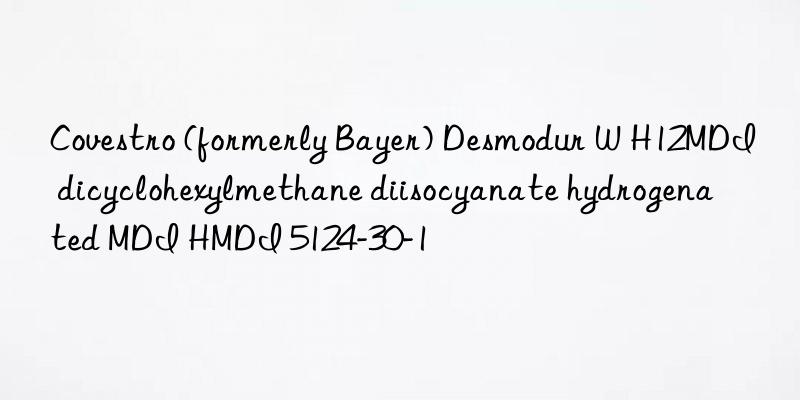
|
Type |
fat Cyclic diisocyanate monomer |
|
Chemical description |
Asia Methyl bis (4-cyclohexyl isocyanate) or dicyclohexylmethane diisocyanate or H12MDI |
|
Molecular formula |
OCN-C6H10-CH2-C6H10-NCO |
|
Molecular weight |
262 |
|
Equivalent |
131 |
|
CASIndex number |
5124 —30 —1 |
|
Purpose |
Use For the preparation of polyisocyanates and polyurethanes |
Product Specifications
|
Characteristics |
Security
Because this product is an isocyanate monomer, special care must be taken when handling it. This product safety information should be read carefully. It contains information on labeling, transportation, storage and product disposal, product safety and ecological impact. At the same time, please also pay attention to the supplementary data of the technical information. In addition, current national regulations governing the handling of polyisocyanates must be observed and followed. In Germany, the maximum permissible concentration of Desmodur W for occupational exposure (sum of vapor and fumes) is 0.054 mg/m3 (based on 8-hour TWA). Do not exceed this limit, even for short periods of time. Remarks: H (= able to be absorbed through the skin) (TRGS00, October 2000). In the UK, the maximum allowable concentration for incidental exposure (based on 8-hour TWA) of all isocyanates is 0.02 mg/m3. The maximum allowable concentration for short-term exposure (based on 10 minutes STEL) is 0.07 mg/cubic meter. This data is based on isocyanate content. In other countries, the maximum allowable concentration related to methylene bis-(4-cyclohexyl isocyanate) should be reported to Check with local authorities. Avoid skin and eye contact with this product or inhalation of its vapor. Also avoid the formation of fumes, for example when cleaning mixing equipment with air flow or opening safety valves on pressurized vessels. When handling Desmodur W products, protective gloves of different materials must comply with the following requirements:
Safety goggles, protective gloves and overall protective clothing must be worn. Contaminated clothing must be removed and disposed of immediately. When working under poor ventilation conditions, especially when handling a large number of open products, a gas mask must be worn (for a short period of time, a mask that can filter harmful gases can be worn; for a long period of time, when the protection conditions are poor) work, must be equipped with an assisted breathing system that can work independently). If the odor of Desmodur W is smelled, it means that the maximum allowable air concentration has been exceeded, and the exposed area should be evacuated immediately.
This article is from the Internet, does not represent the position of Toluene diisocyanate reproduced please specify the source.https://www.chemicalchem.com/archives/17406
|

 微信扫一扫打赏
微信扫一扫打赏

